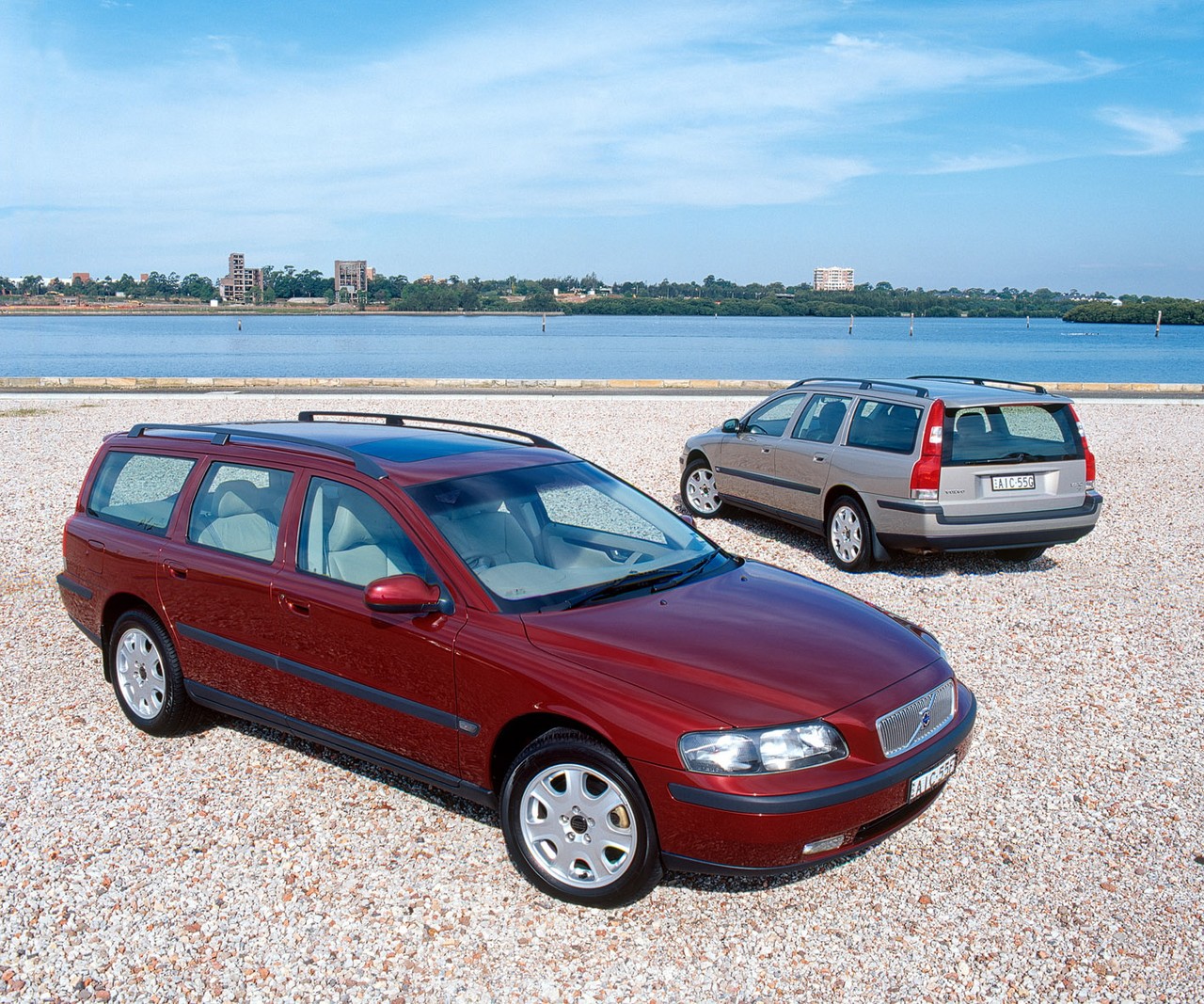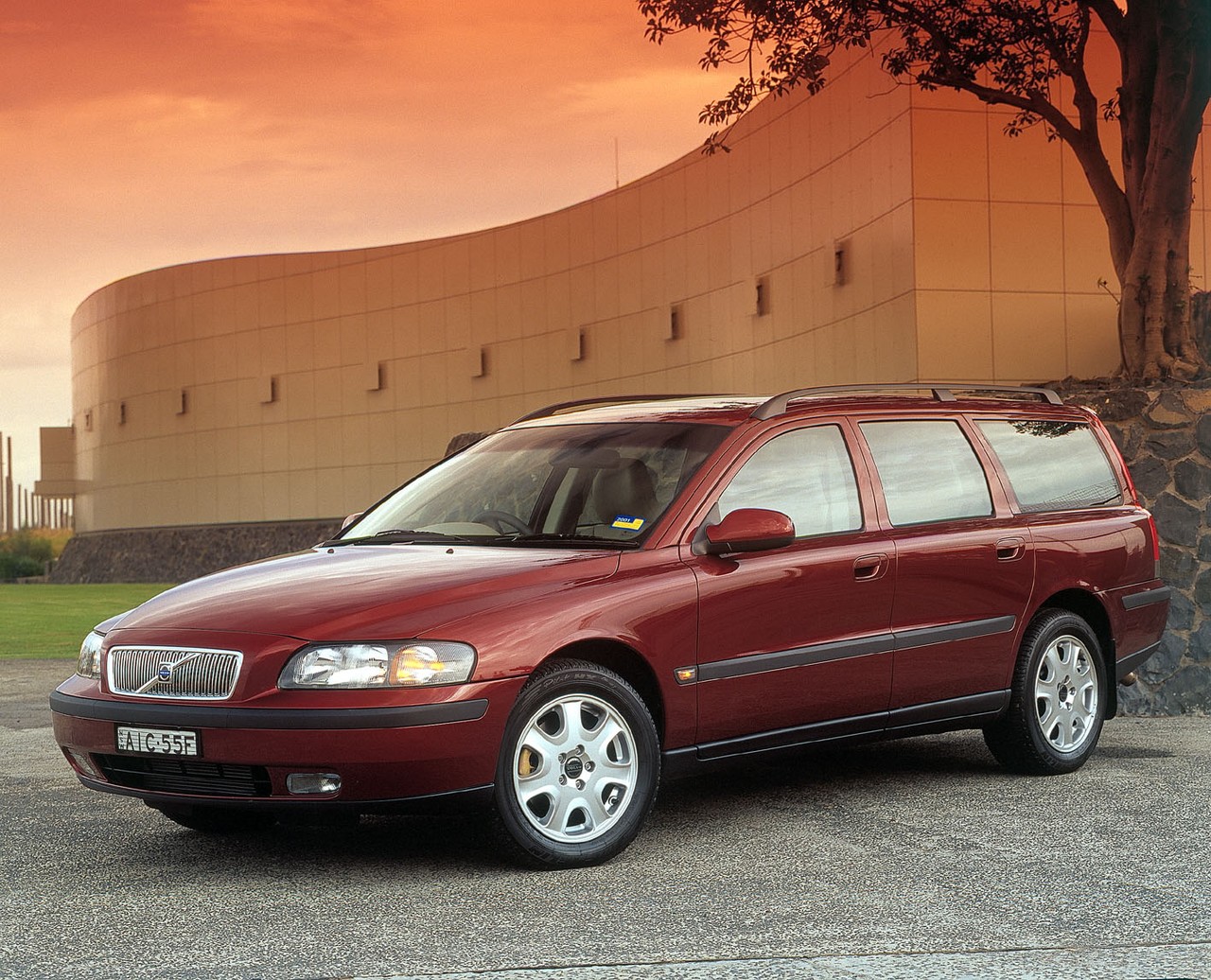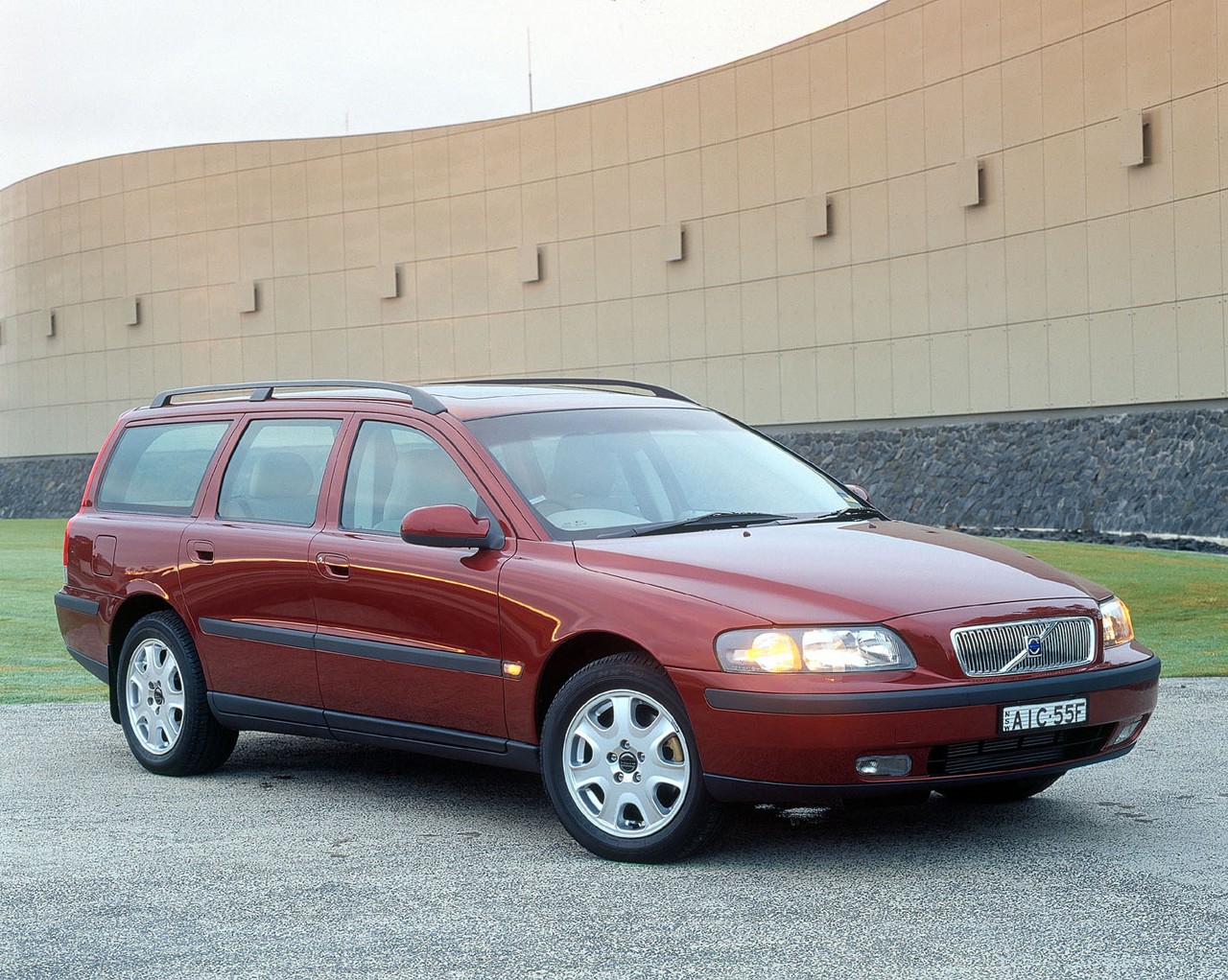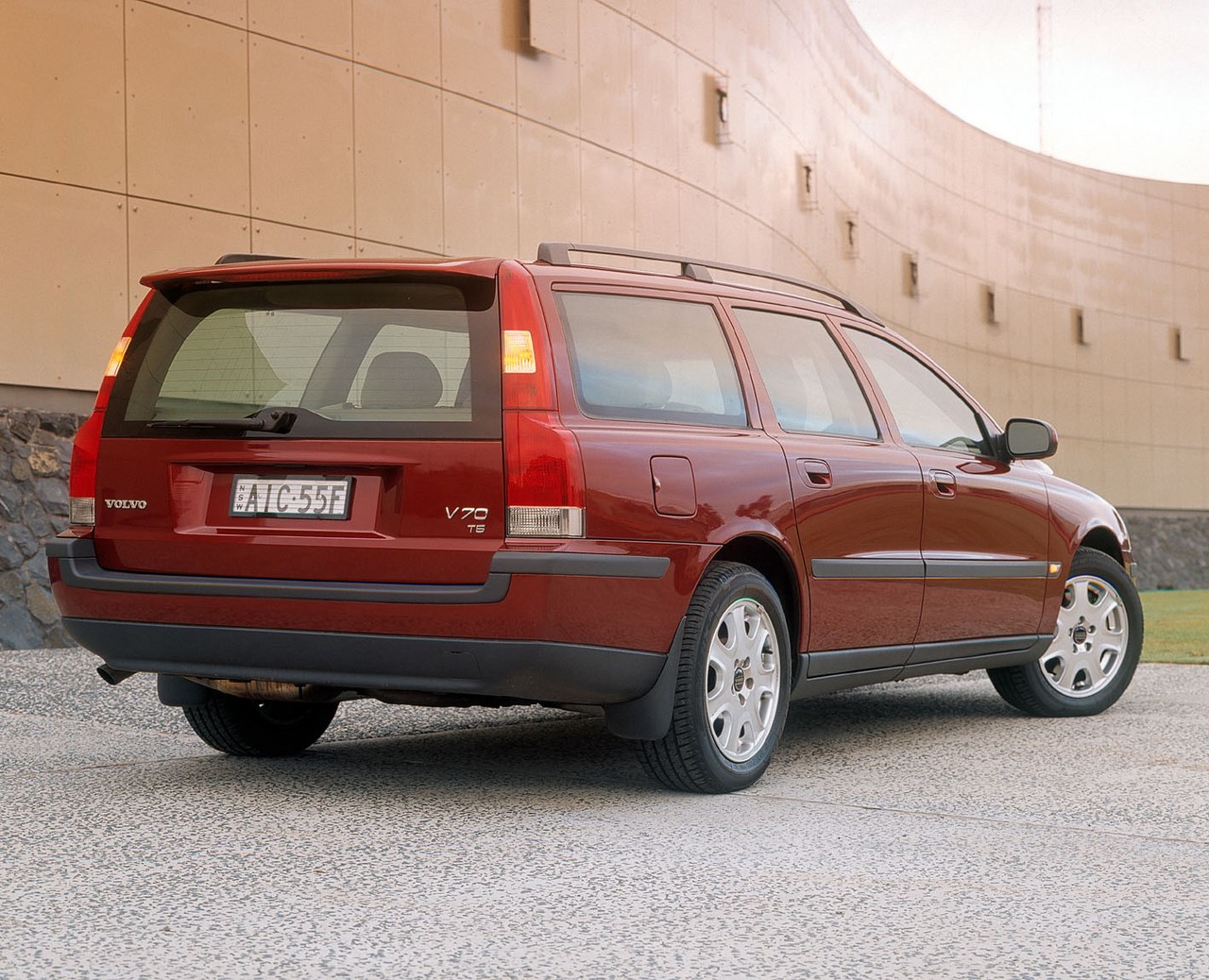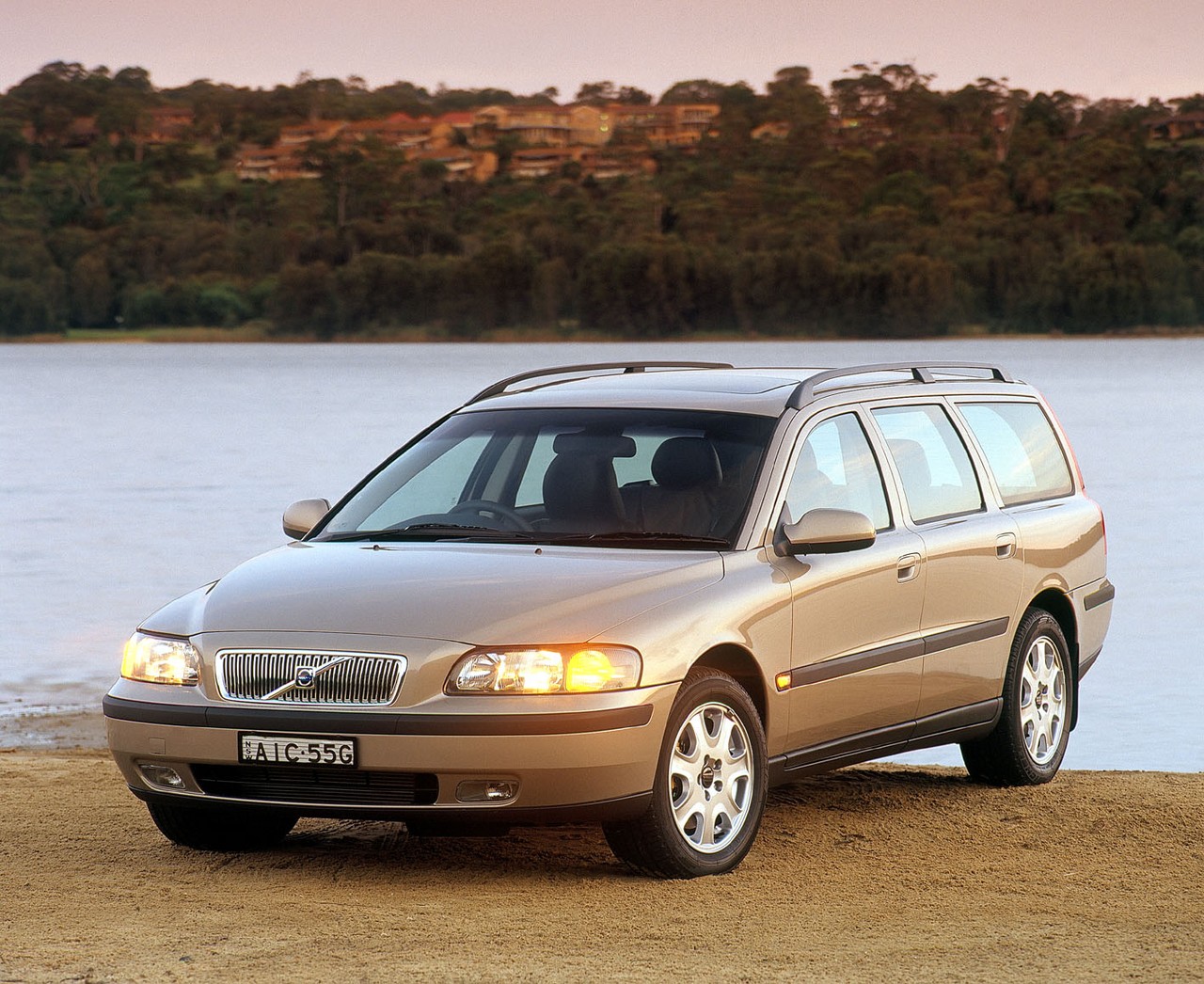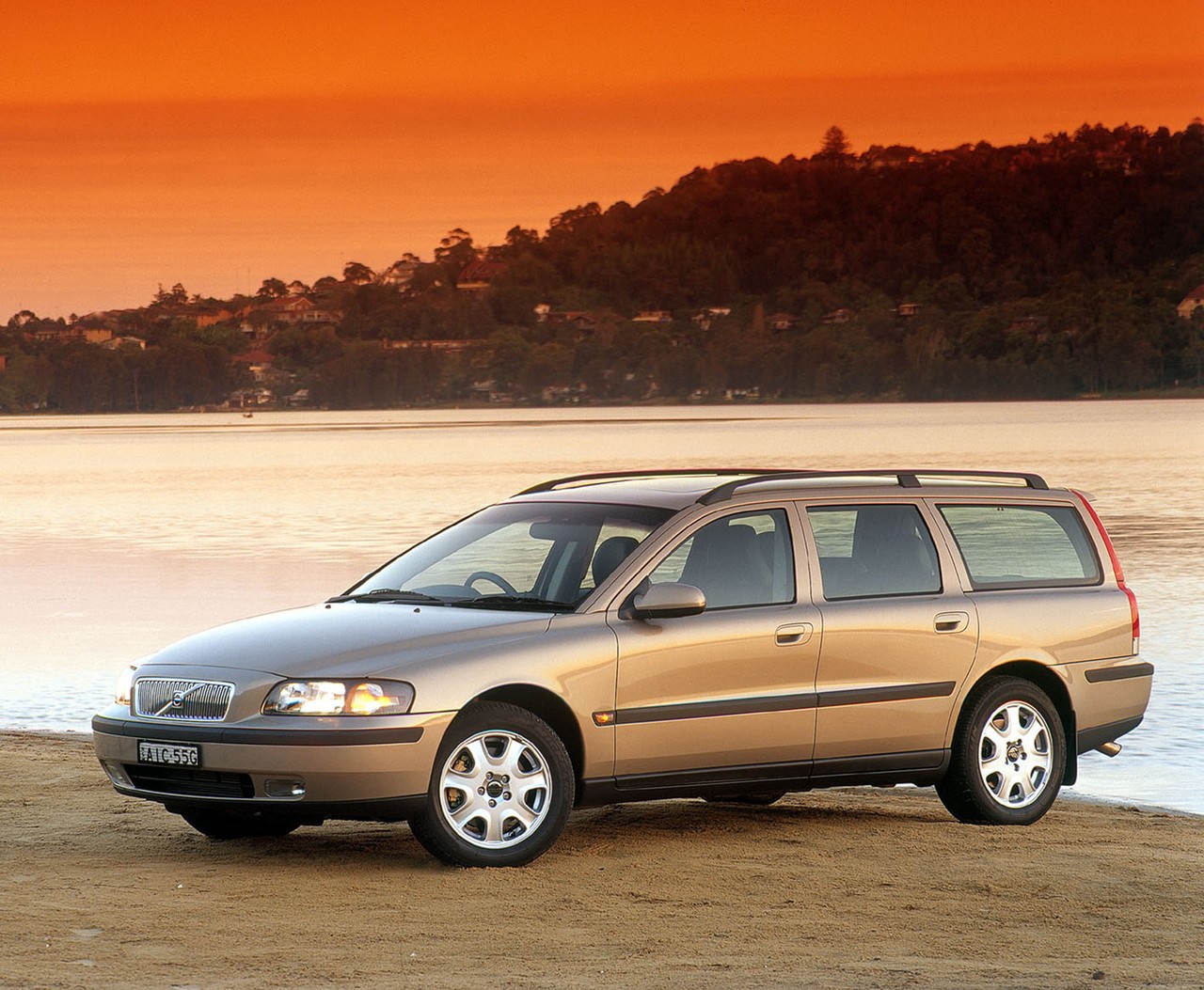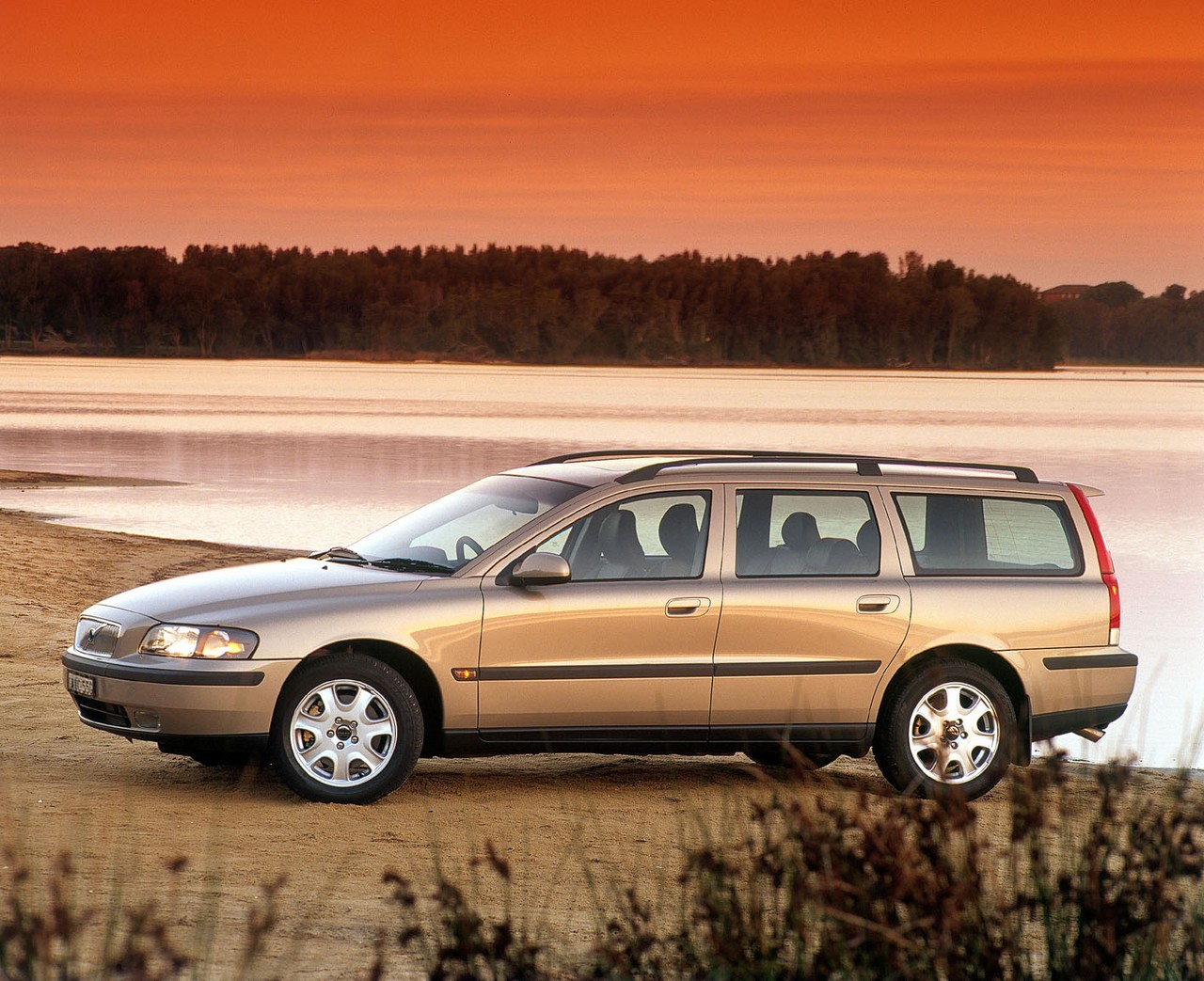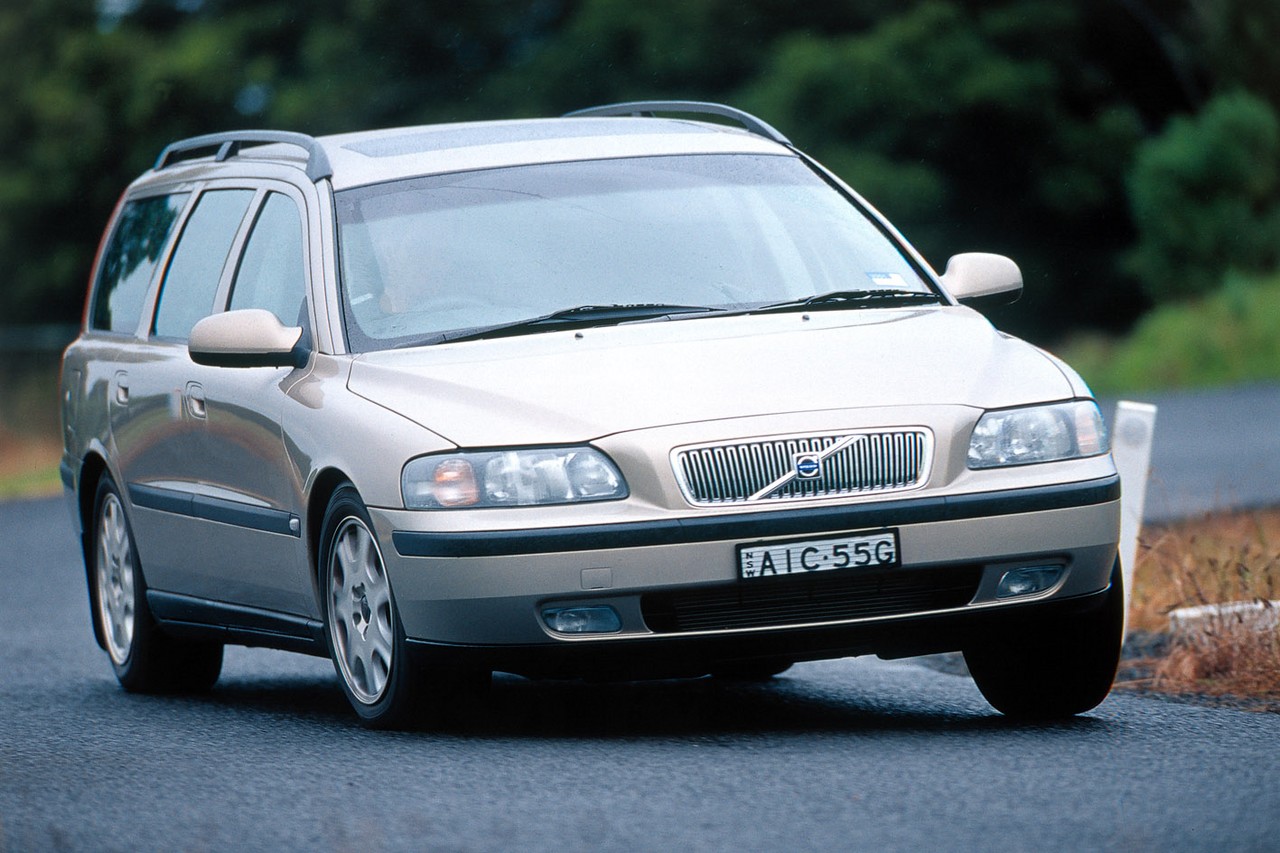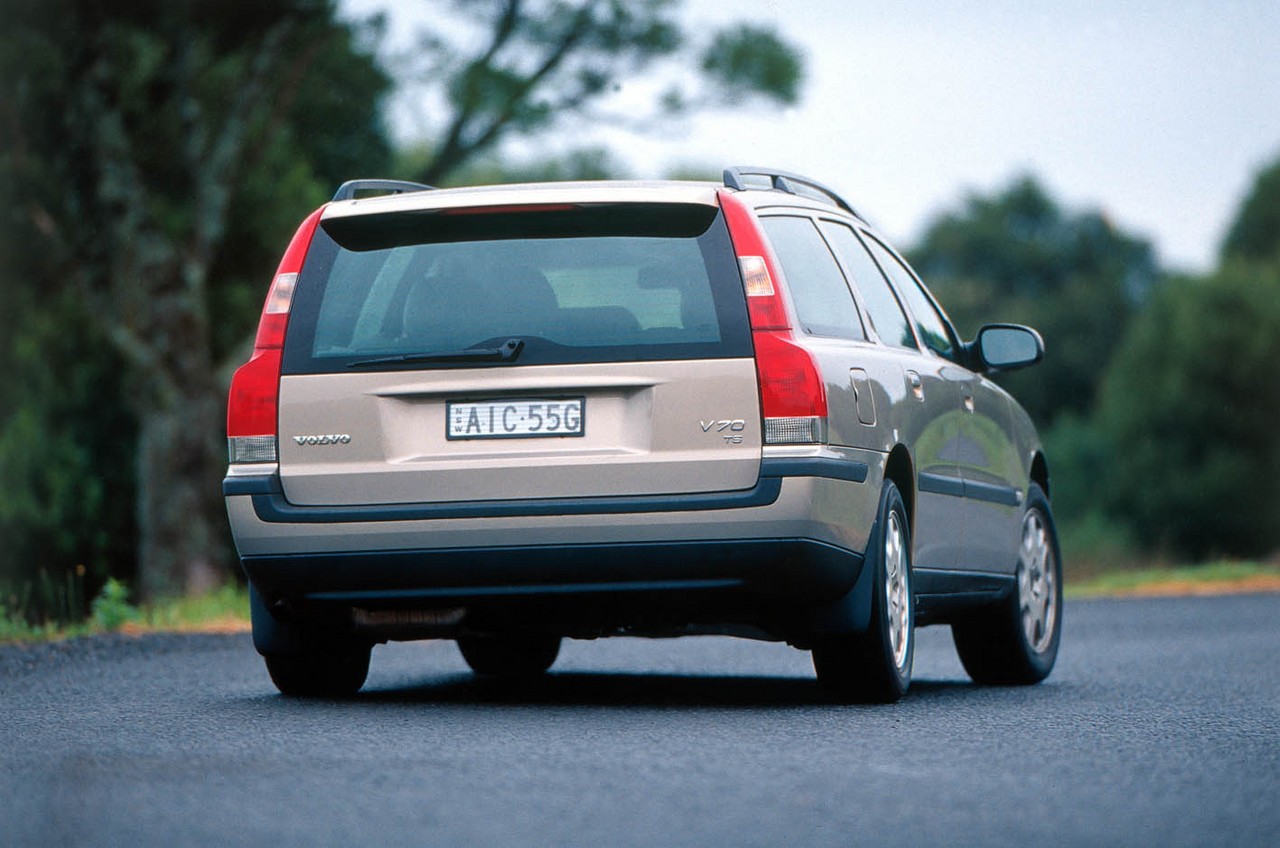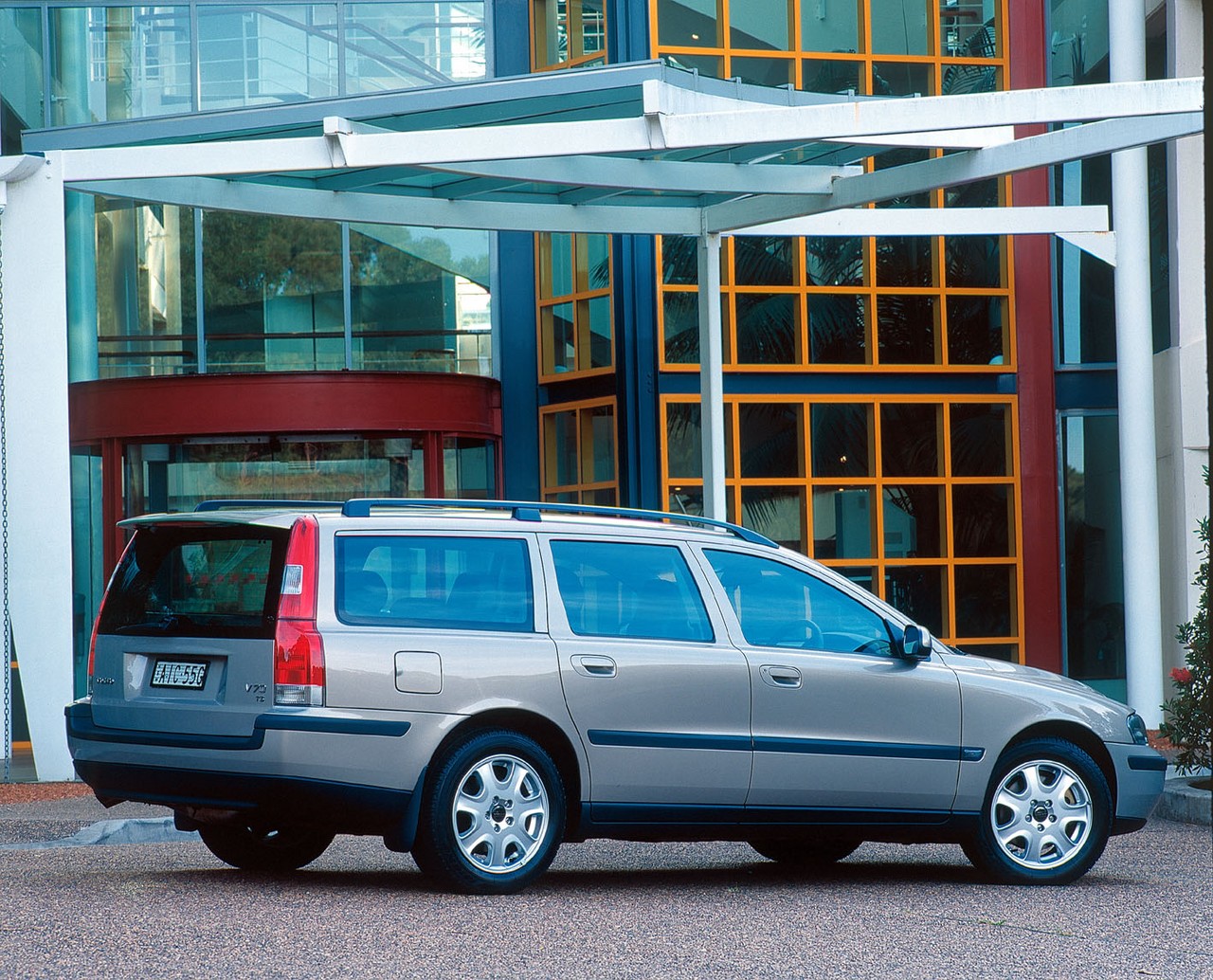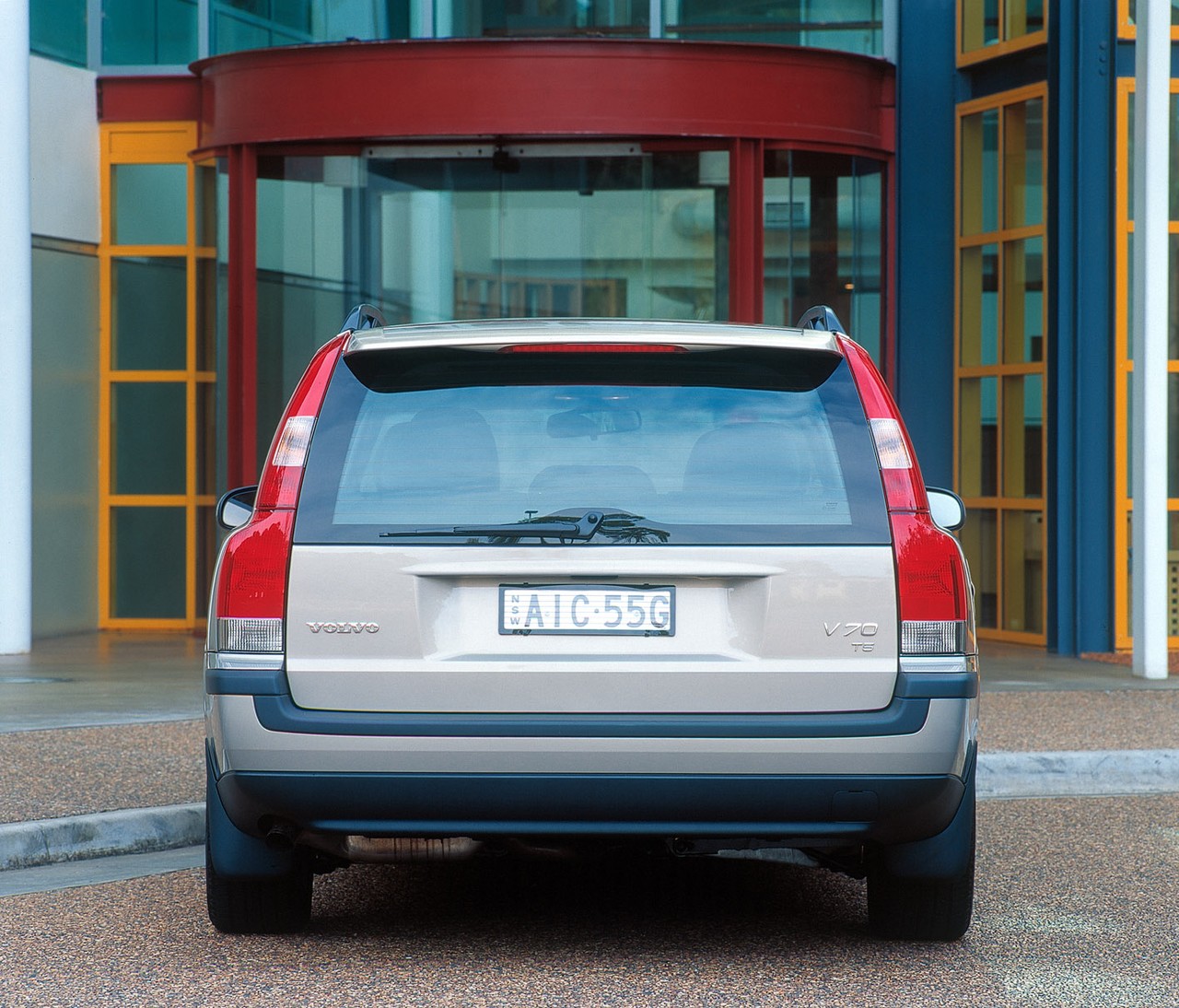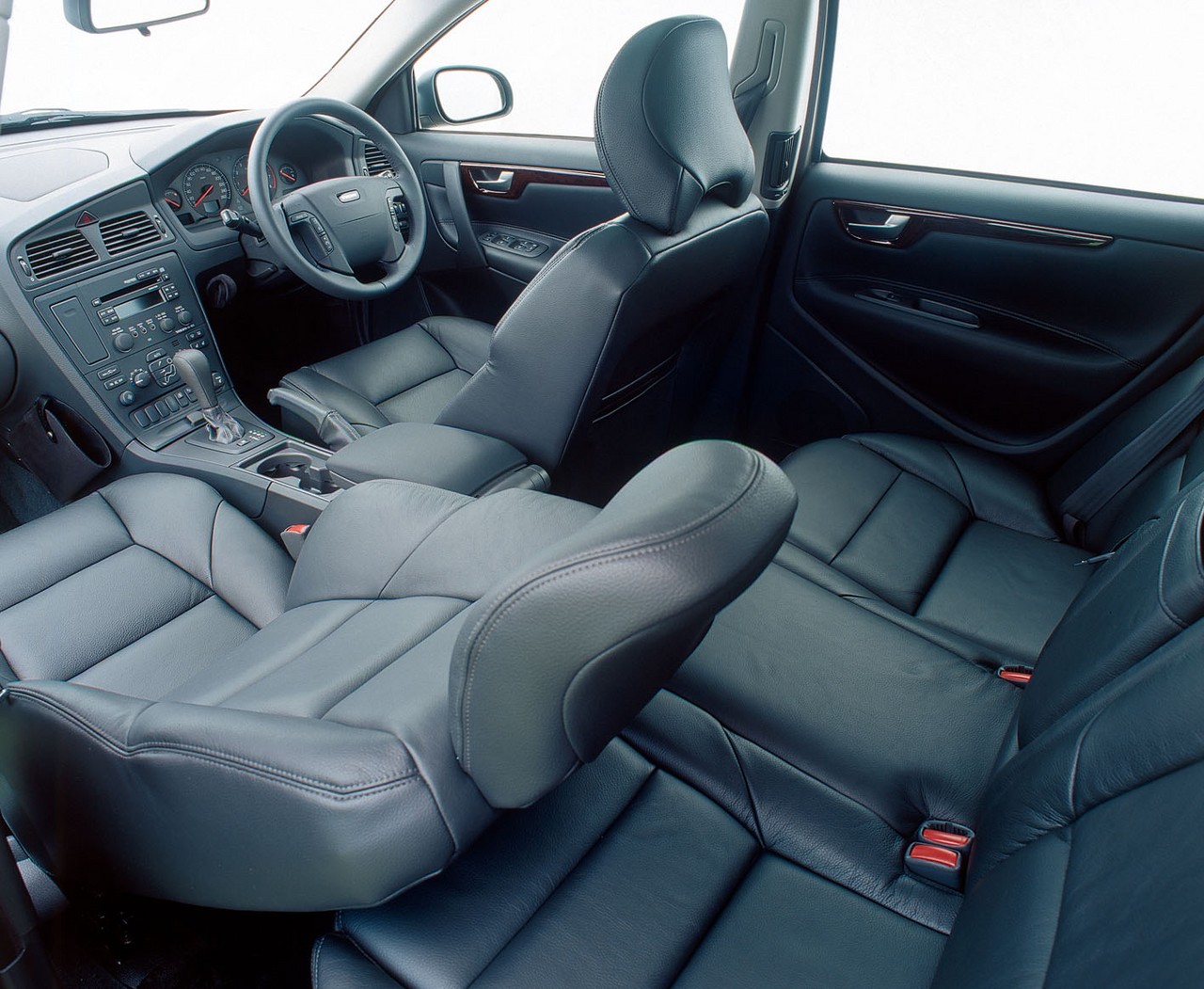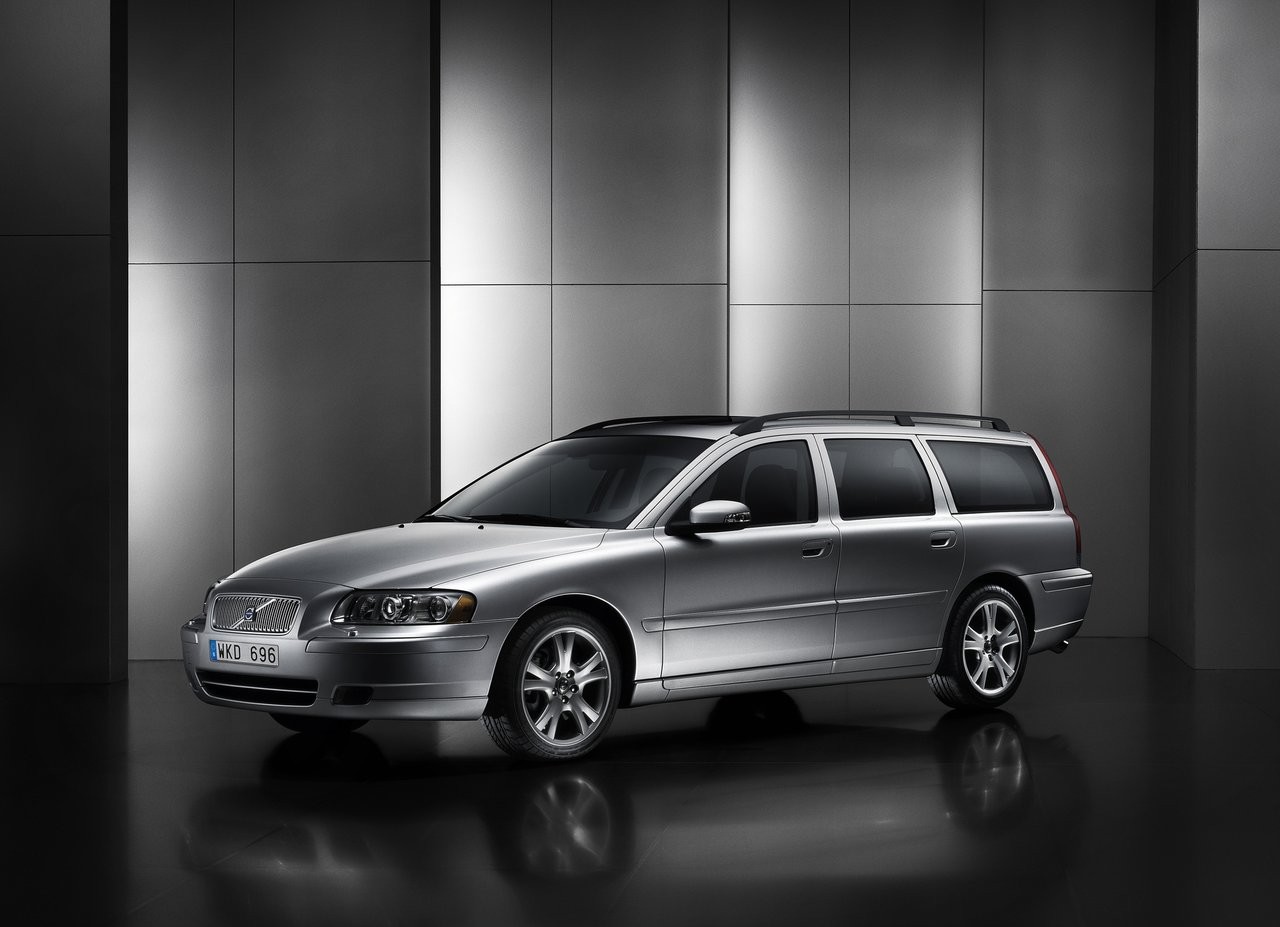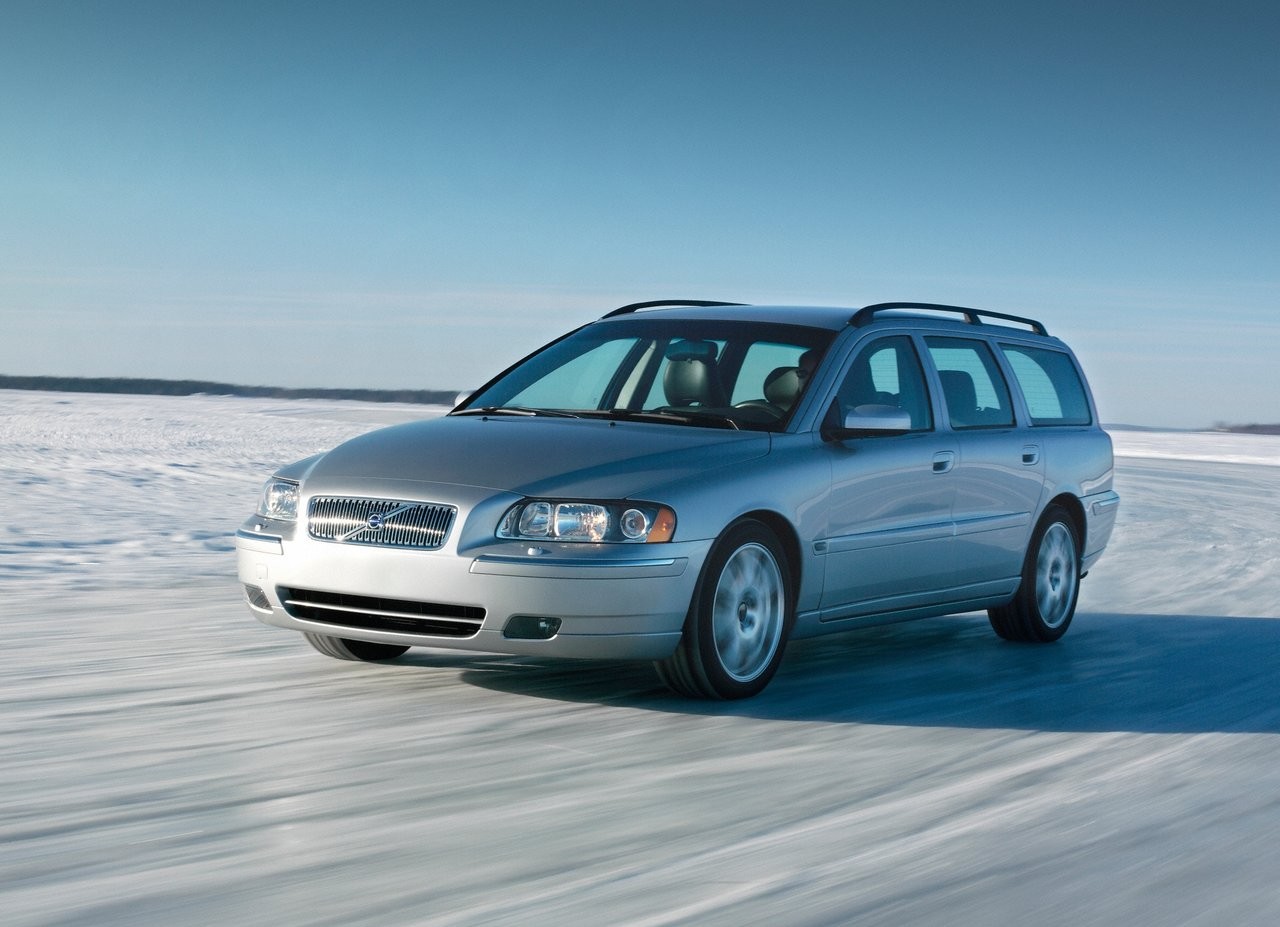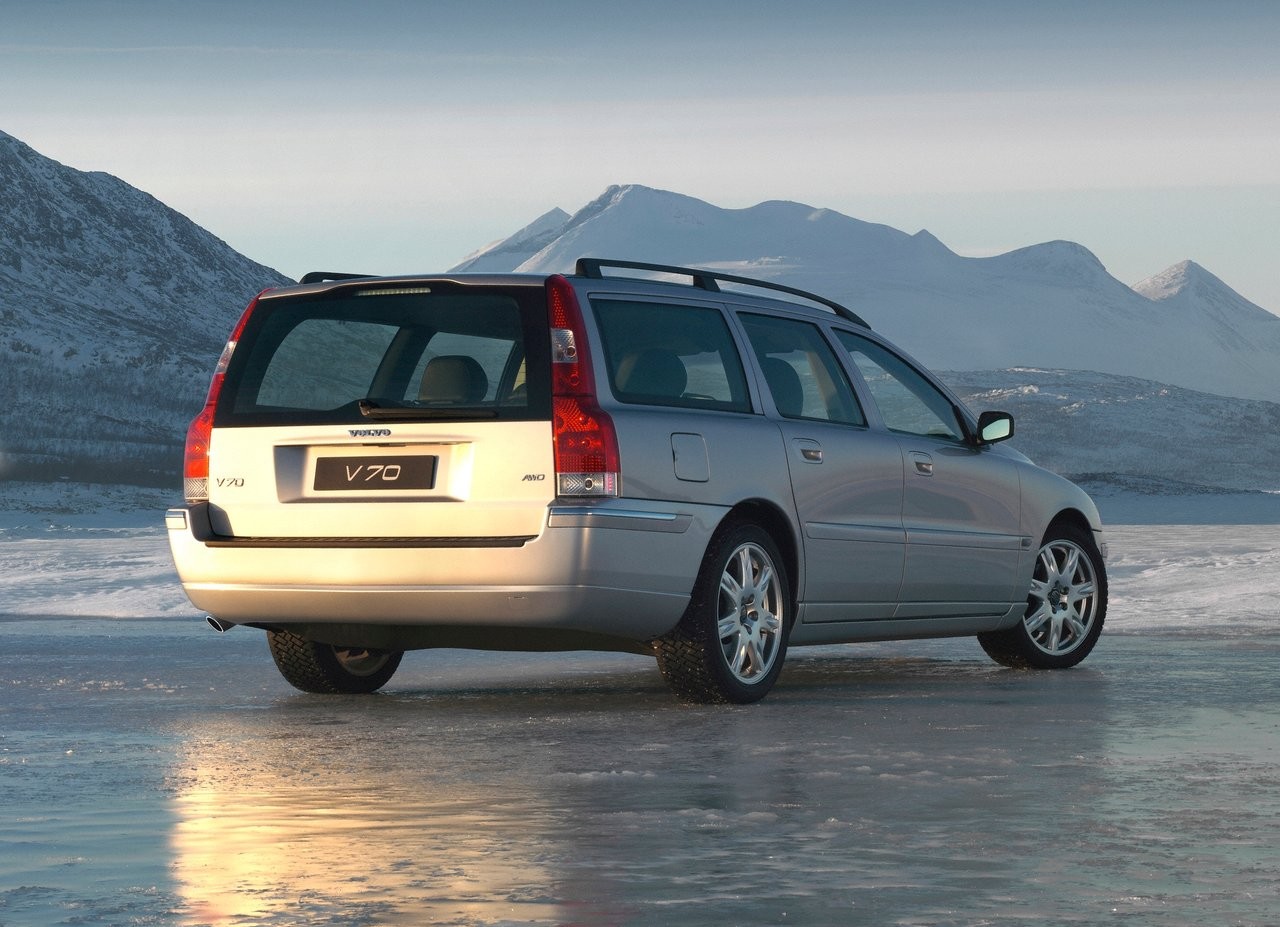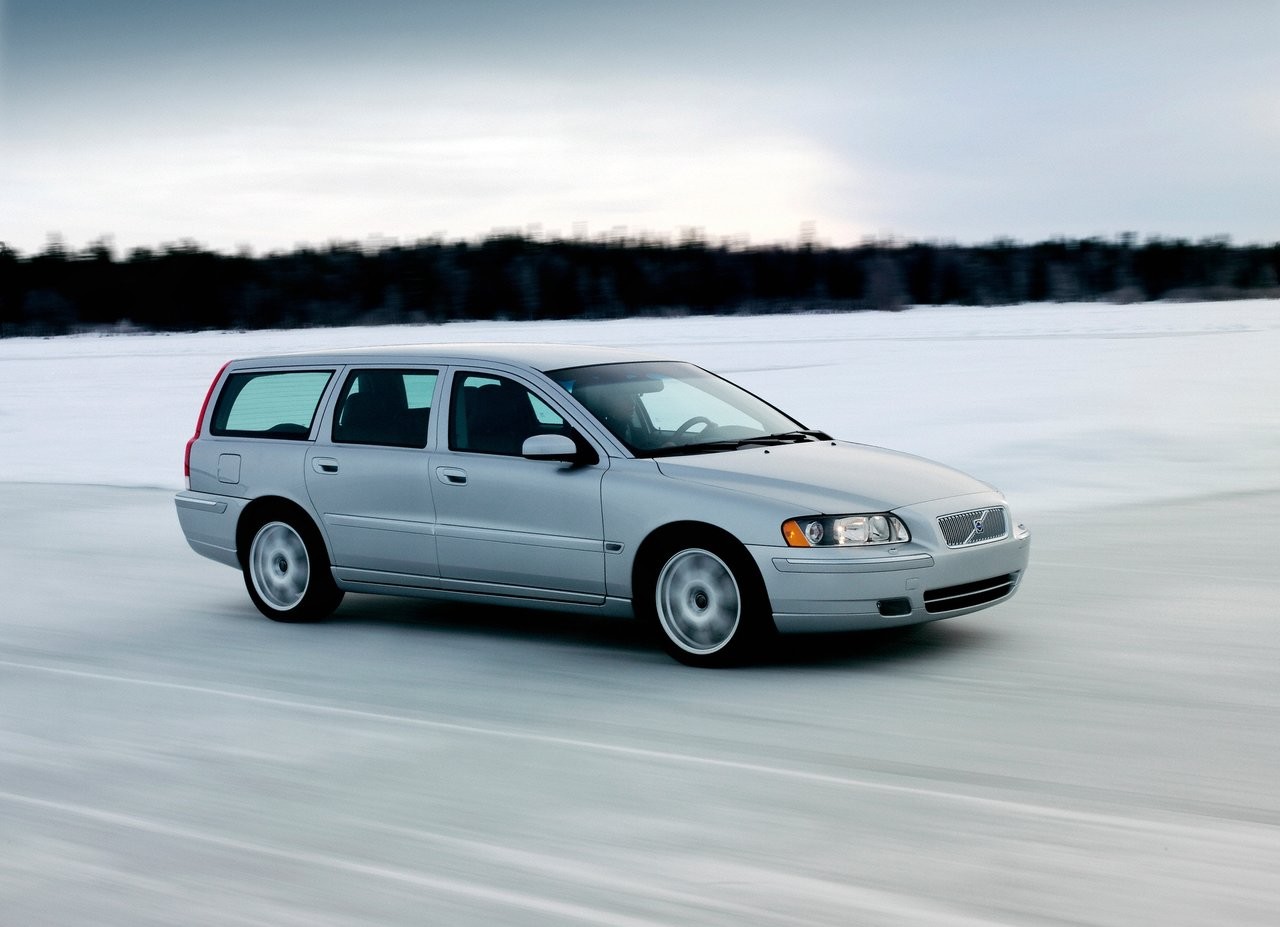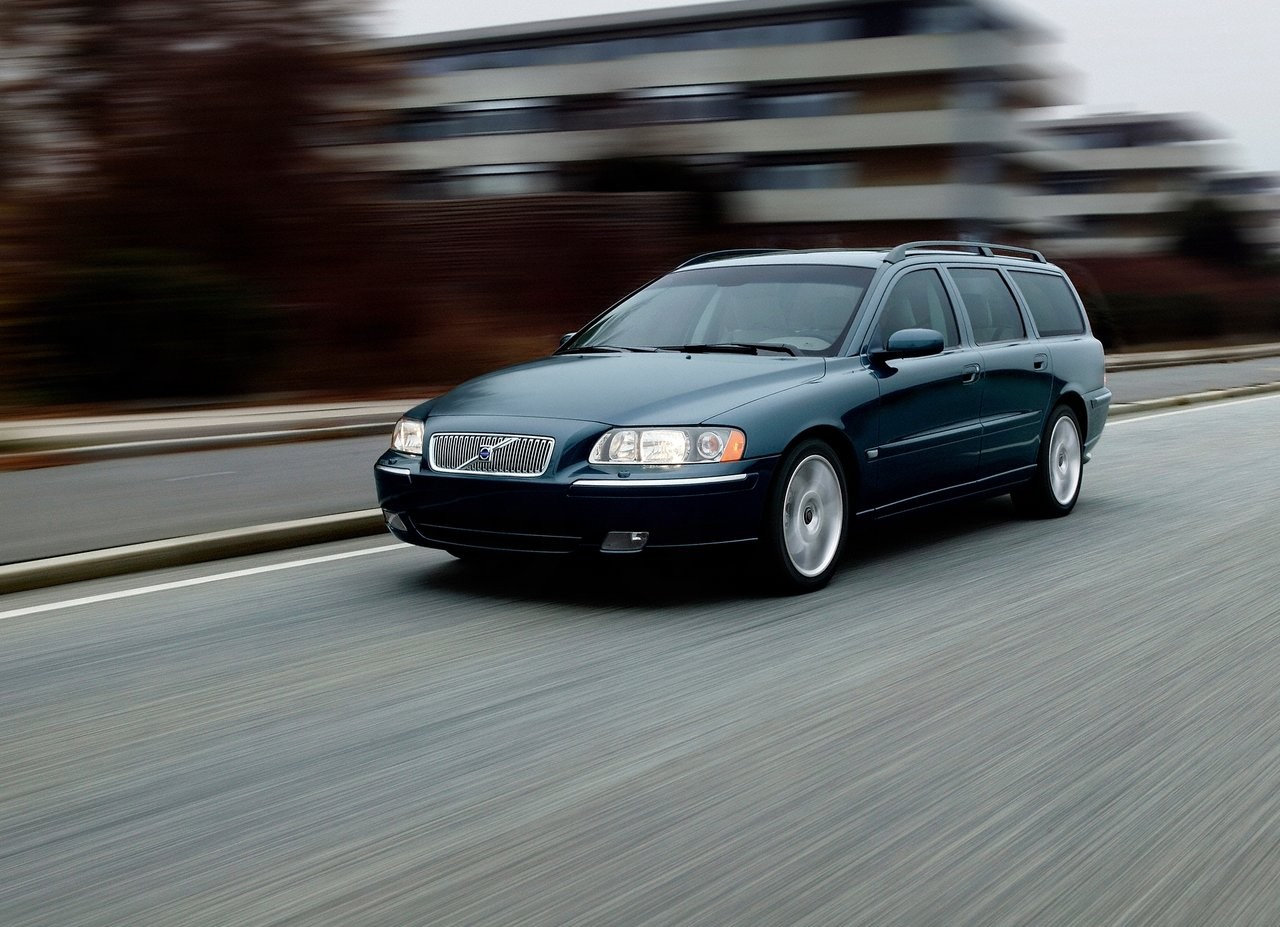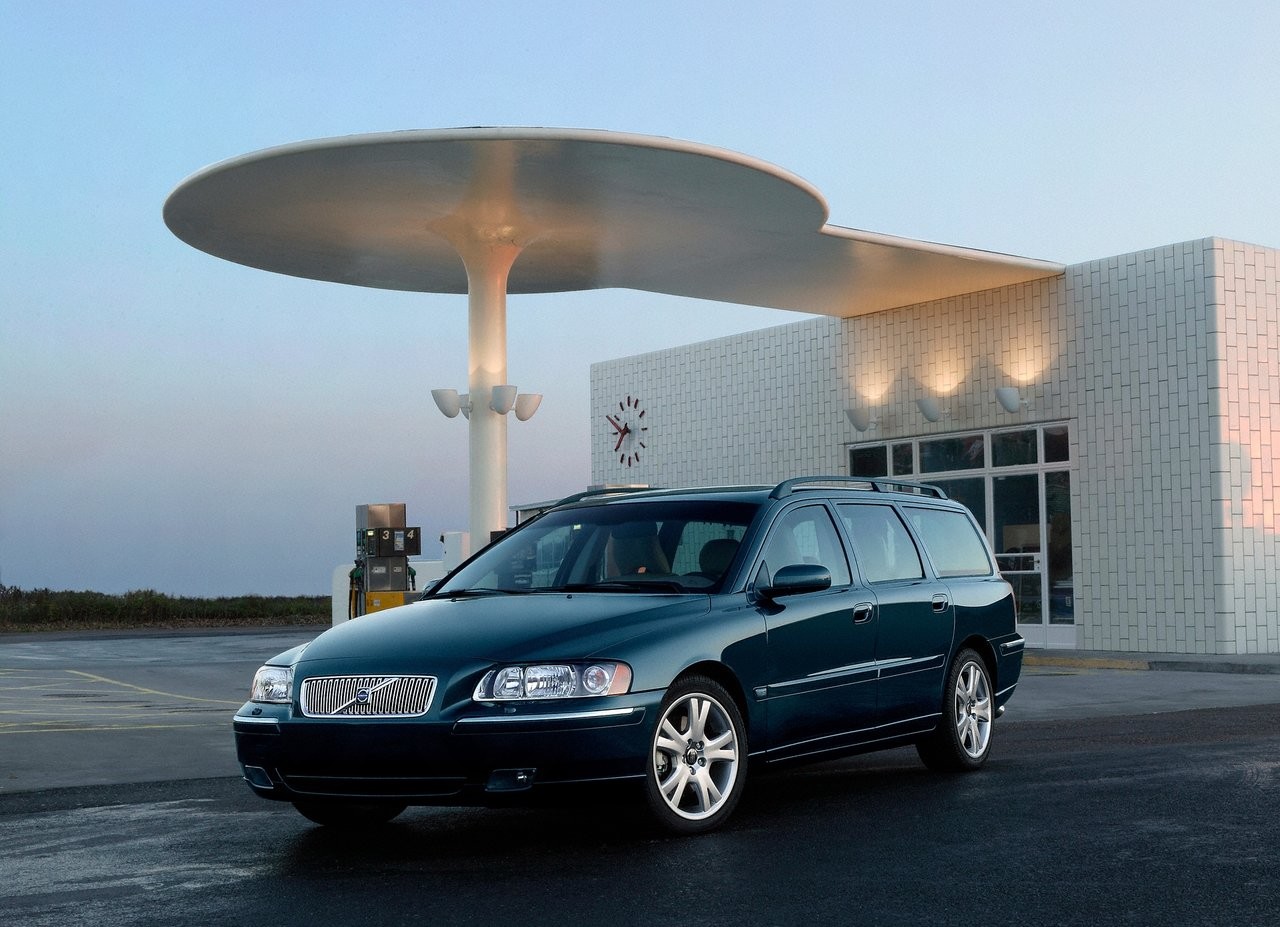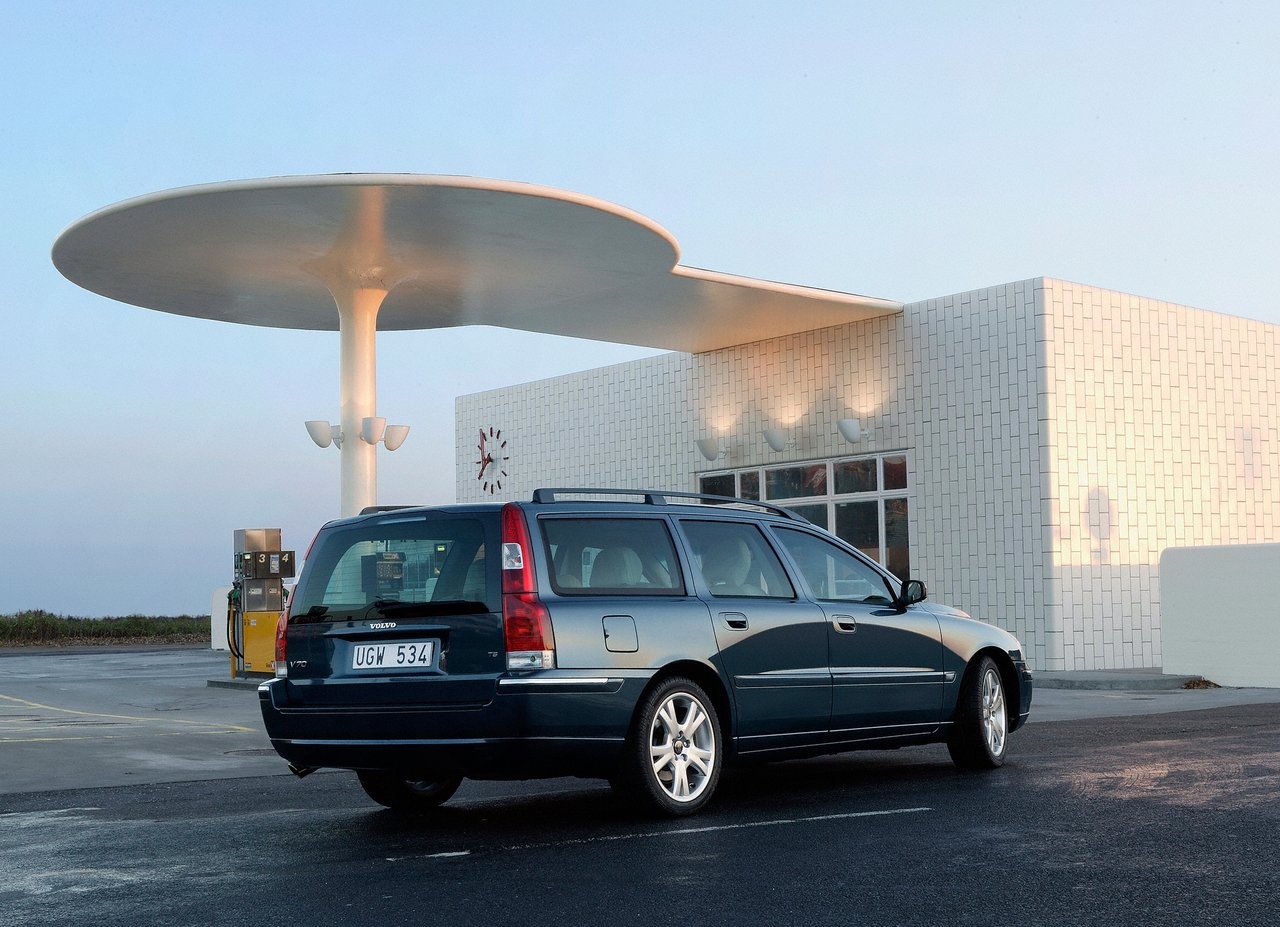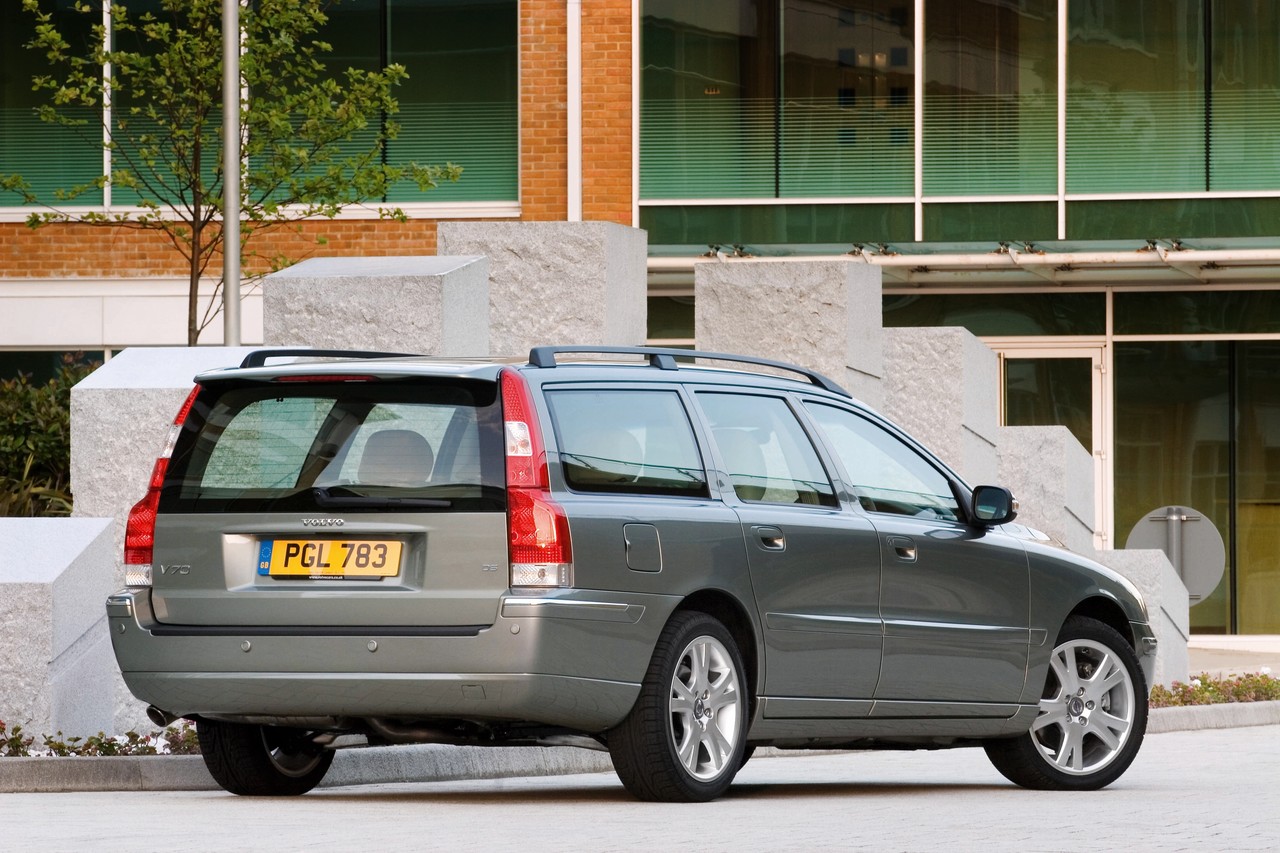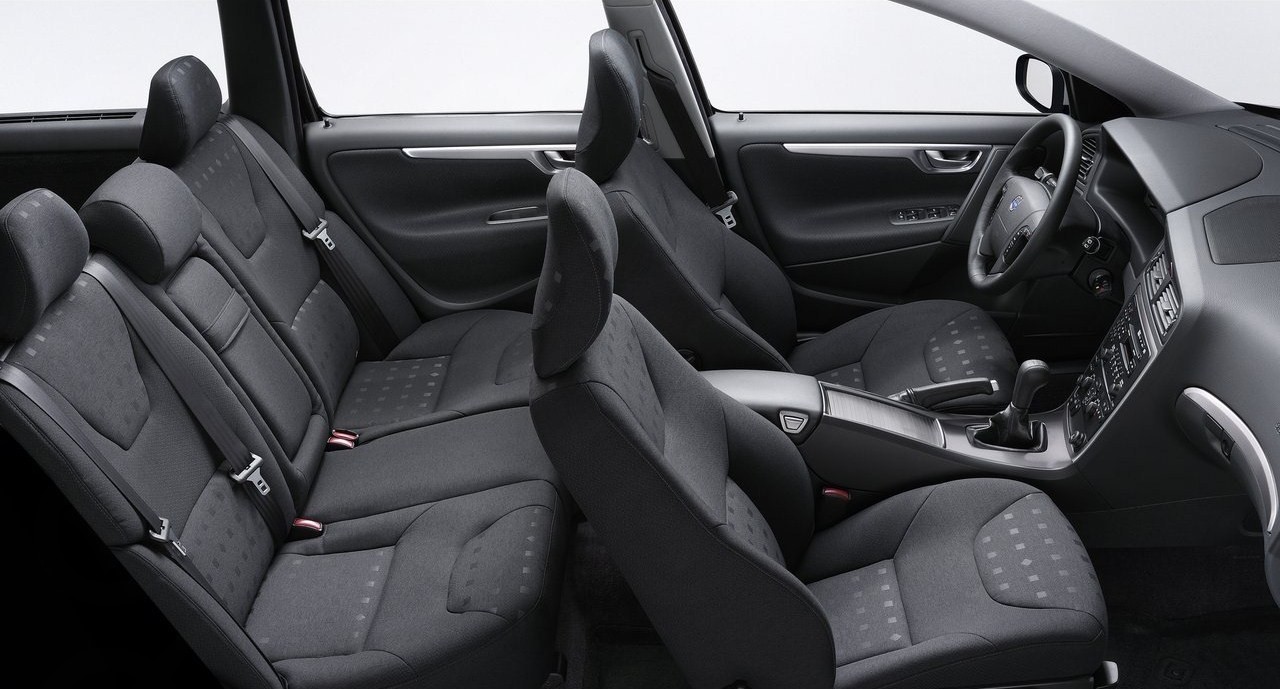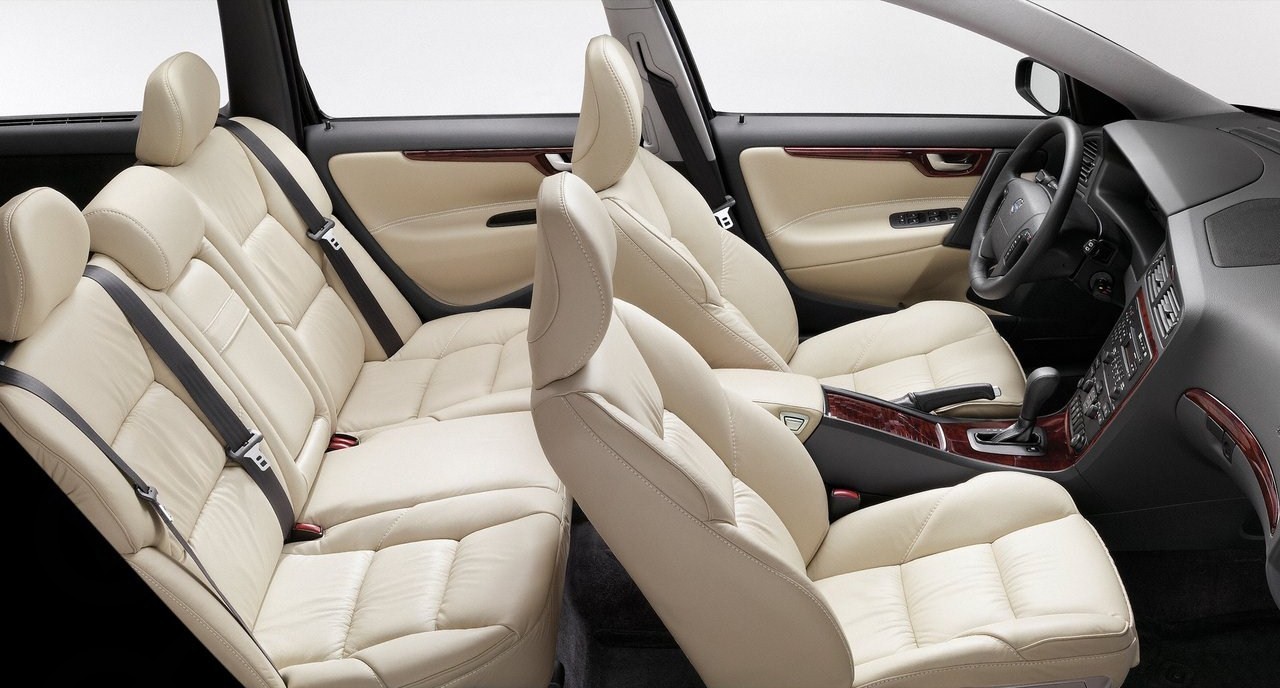
- Comfortable seats (front and rear)
- Flexible low-pressure turbo petrol engines
- Responsive brakes
- Under-damped suspension fails to absorb bigger bumps
- Underwhelming dynamics
- Steering lacks feedback
- Naturally aspirated 2.4-litre petrol engine lacks torque
- Turbo lag for V70 R
Review: Volvo Mk.2-I V70 (2000-04)
Overview
Released in May 2000, the Volvo Mk.2 Phase I (Mk.2-I) V70 was a large, five-seat wagon. The Volvo V70 range initially consisted of the 2.4T and T5 variants, with the 2.4 following in July 2000. The range was subsequently expanded by the all-wheel drive R variant in 2003; in 2004, the 2.4T was effectively replaced by the AKTIV.
| Variant | Years | Engine | Trans. | Peak power | Peak torque |
|---|---|---|---|---|---|
| 2.4 | 2000-01 | 2435 cc B5244S petrol I5 | 5sp auto, 5sp man |
125 kW at 5900 rpm | 230 Nm at 4500 rpm |
| 2.4 SE | 2000-04 | ||||
| 2.4T | 2000-03 | 2435 cc B5244T3 turbo petrol I5 | 5sp auto, 5sp man |
147 kW at 6000 rpm | 285 Nm at 1800-5000 rpm |
| AKTIV | 2004 | 2521 cc B5254T2 turbo petrol I5 | 5sp auto | 154 kW at 5000 rpm | 320 Nm at 1500-4500 rpm |
| T5 | 2000-03 | 2319 cc B5234T3 turbo petrol I5 | 5sp auto, 5sp man |
184 kW at 5200 rpm | 330 Nm at 2400-5200 rpm |
| R (AWD) | 2003-04 | 2521 cc B5254T4 turbo petrol I5 | 5sp auto | 220 kW at 6000 rpm | 350 Nm at 1800-6000 rpm |
| 6sp man | 220 kW at 5500 rpm | 400 Nm at 1950-5250 rpm |
AWD system
The Volvo V70 R was fitted a Haldex all-wheel drive system with a wet multi-plate clutch. In normal conditions, the system provided a 95:5 front:rear torque distribution. If traction was lost, however, the Haldex coupling could activate in the time required for one quarter of a wheel’s revolution. As such, torque to the rear wheels increased until the clutch locked, at which point torque was evenly distributed between the front and rear axles (i.e. 50:50). Furthermore, Volvo’s traction control and management system (‘TRACS’) could brake an individual wheel to transfer torque to the opposing wheel (i.e. cross-axle torque transfer) at speeds of up to 120km/h.
Dimensions
Compared to the Volvo Mk.1 V70 , the Mk.2 V70 was 10 mm shorter (at 4710 mm), 44 mm wider (1804 mm), 59 mm lower (1371 mm) and had a 90 mm longer wheelbase (2755 mm). Significantly, the Mk.2 V70 had bonded – instead of spot-welded – body panels which contributed to a stiffer chassis.
Suspension and steering
Based on the same platform as the Volvo Mk.1 S80 , the Volvo V70 had MacPherson strut front suspension and independent, multi-link rear suspension. Furthermore, the Volvo V70 had rack-and-pinion steering with hydraulic power assistance.
Safety equipment
Standard safety equipment for the Volvo Mk.2 V70 included dual front airbags (with two-stage deployment), front side airbags, full-length curtain airbags (i.e. for front and rear occupants), ABS, electronic brake force distribution, Volvo’s Whiplash Protection System (‘WHIPS’) and front seatbelts with pretensioners and load limiters. The 2.4T was further equipped with traction control, while the T5 and R were also fitted with electronic stability control.
Features
Standard features for the Volvo V70 2.4 included an eight speaker sound system with CD player, climate control air conditioning, leather seats, 60/40 split and folding rear seats, remote central locking, power windows and mirrors, a tilt and reach adjustable steering wheel, roof racks and an immobiliser. The 2.4 SE was further equipped with 15-inch alloy wheels, cruise control and a leather-wrapped steering wheel.
Beyond this, the V70 2.4T added 16-inch alloy wheels, power adjustable driver’s seat with memory function, heated front seats, trip computer, roof rails and woodgrain interior trim. Released in 2004, the V70 AKTIV was similarly equipped to the 2.4T.
The V70 T5 featured 17-inch alloy wheels, a nine speaker Dolby Surround Pro Logic sound system with a four-disc in-dash CD player, satellite navigation, contoured sports seats, a power adjustable front passenger seat with memory function, front fog lights and car phone.
The Volvo V70 R was distinguished by its 18-inch alloy wheels with electronic damper control (Volvo’s ‘Four C’ system), an eleven speaker sound system, bi-xenon headlights with washers. The R was also fitted with 330 mm ventilated front discs with four-piston Brembo brake calipers front and rear.
Related links
Review: Volvo Mk.2-II (2004-07)
Overview
Released in October 2004, the Volvo Mk.2 Phase II (Mk.2-II) V70 introduced a simplified line-up and revised styling. The range initially consisted of the 2.4 SE, though this was replaced by the 2.4 LE in 2006. Visually, the Mk.2-II V70 could be identified by its revised front grille, seats, bumpers, centre stack, interior trim and clear tail-lights; Volvo also claimed improved noise insulation.
| Variant | Editions | Years | Engine | Trans. | Peak power | Peak torque |
|---|---|---|---|---|---|---|
| 2.4 | SE | 2004-05 | 2435 cc B5244S petrol I5 | 5sp man., 5sp auto |
125 kW at 6000 rpm | 225 Nm at 4500 rpm |
| LE | 2006-07 |
Features
Compared to its Mk.2-I predecessor, standard features for the V70 2.4 SE were extended to include 16-inch alloy wheels, a power adjustable driver’s seat and front fog lights.
The V70 2.4 LE was further equipped with dual-zone climate control air conditioning, leather seats and driver’s seat memory settings.
Related links
